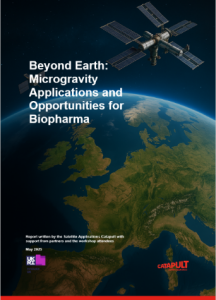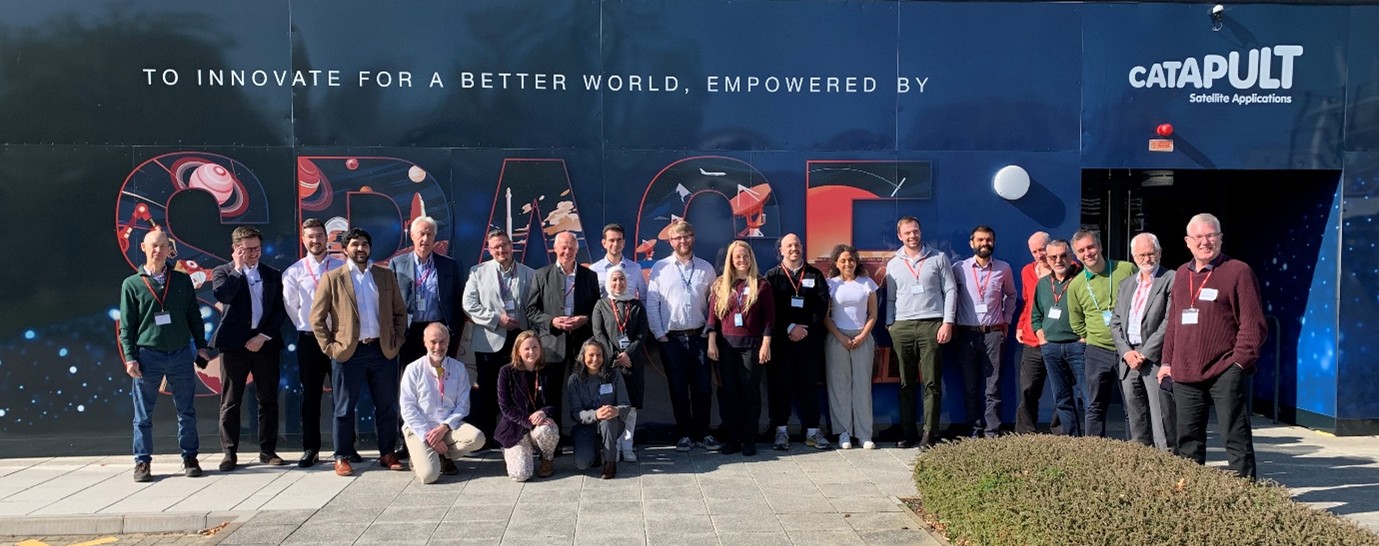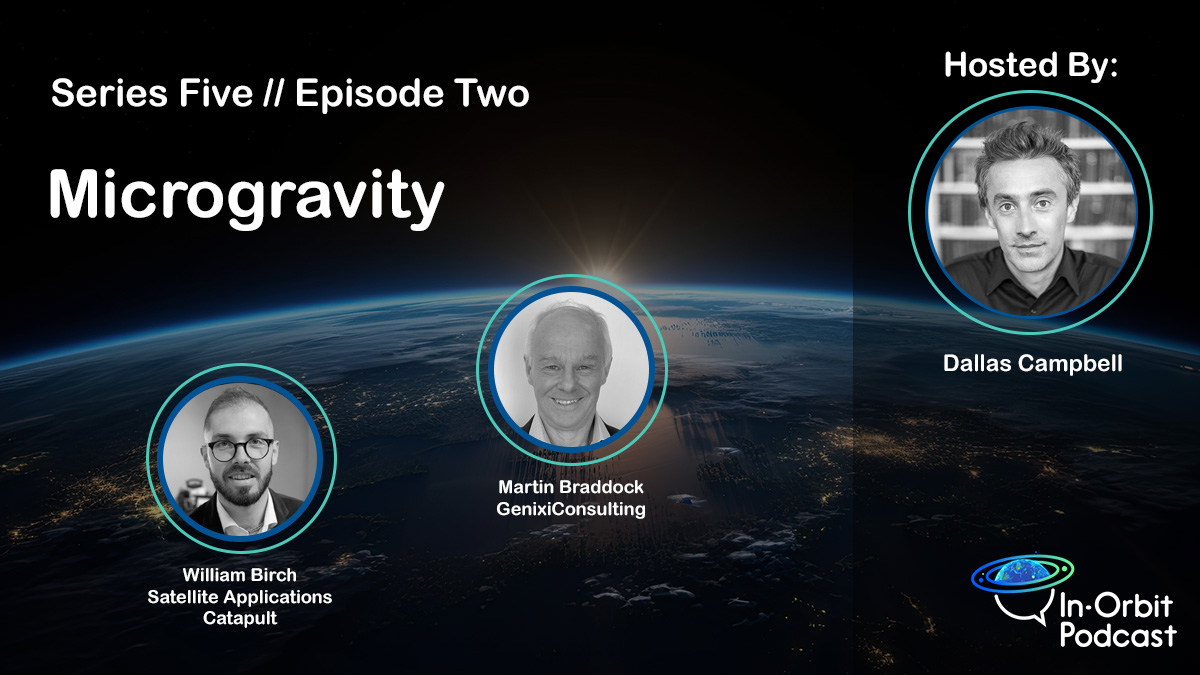The Satellite Applications Catapult is proud to announce the inaugural meeting of the Microgravity Life Sciences Working Group. The group was brought together following a kick-off Space BioPharma workshop in April 2025 convened by the Satellite Applications Catapult together with Cranfield University, the Medicines Discovery Catapult and Weston Strategy Lab.
This workshop resulted in a paper that documents the findings of the day and sets out the next steps for the initiative.
The paper can be accessed by following this link >>
The aim is to advance the UK’s use of the in-orbit, microgravity environment by UK life science organisations to undertake research and development. Stuart Catchpole, Regional Director of Space East, who will co-chair the group, said ‘this is an amazing opportunity to create a collaborative approach that will put the UK at the forefront of space-enabled research. The ambition of the group is to benefit the UK’s life science and space sectors and ultimately contribute to a healthier future for us all.’
Unlocking the Potential of Microgravity: A New Frontier for the Biopharmaceutical Industry
 The biopharmaceutical industry is always searching for innovative ways to accelerate drug discovery, improve manufacturing processes, and deepen our understanding of disease. One of the most promising yet underutilised environments for achieving these goals is microgravity—conditions that exist in space, where the force of gravity is significantly reduced. Far from being science fiction, microgravity research offers real and transformative possibilities for life on Earth. With the cost of accessing orbit tumbling and the provision of dedicated platforms for in-space R&D expanding, space is ready for forward-thinking biopharma businesses to grasp the opportunity.
The biopharmaceutical industry is always searching for innovative ways to accelerate drug discovery, improve manufacturing processes, and deepen our understanding of disease. One of the most promising yet underutilised environments for achieving these goals is microgravity—conditions that exist in space, where the force of gravity is significantly reduced. Far from being science fiction, microgravity research offers real and transformative possibilities for life on Earth. With the cost of accessing orbit tumbling and the provision of dedicated platforms for in-space R&D expanding, space is ready for forward-thinking biopharma businesses to grasp the opportunity.
Why Microgravity Matters for Biopharma
On Earth, gravity is a constant force that subtly influences everything—from how cells behave to how proteins fold. In microgravity, these limitations disappear. This allows researchers to observe biological processes with unprecedented clarity. Imagine growing more perfect protein crystals to unlock new drug targets, modelling stem cell development without the constraints of Earth’s pull or replicating age-related diseases in a fraction of the time. These are not hypothetical benefits; they are documented outcomes from existing microgravity studies.
Despite the scientific potential, commercial adoption of space-based research has lagged behind expectations. This is surprising, especially when considering that pharmaceutical companies globally invest over £230 billion each year into R&D. Studies suggest that microgravity-enabled drug development and contract research could generate up to £3.2 billion in new revenue—yet few companies have seized the opportunity.
Charting the Path Forward
To address this gap, the Satellite Applications Catapult—under its Beyond Earth Mission—joined forces with Medicines Discovery Catapult, Cranfield University, and Weston Strategy Lab to convene a pivotal multi-stakeholder workshop. This event brought together experts from academia, industry, and government to tackle the challenges head-on and shape a future roadmap.
The workshop participants explored:
- Barriers and Challenges
From regulatory uncertainty to limited access to in-orbit platforms, the hurdles to entry are real. Cost, complexity, and a lack of awareness among R&D teams were cited as key inhibitors to progress. - Opportunities for Biopharma
Space offers a clean, controlled environment that enhances reproducibility and scalability. Applications discussed ranged from biologics manufacturing to long-duration disease modelling and even the development of novel therapeutics. - A Roadmap to Success
The group outlined a UK-centric pathway to increase uptake of microgravity R&D. Key steps included fostering public-private partnerships, establishing dedicated funding mechanisms, building a national centre of excellence, and integrating microgravity modules into early-stage research workflows.
A Call to Action
Nasreen Dhanji, Beyond Mission Lead at the Satellite Applications Catapult said, “The UK is uniquely positioned to lead this emerging field. With our world-class space infrastructure, a robust life sciences sector, and government commitment to both space and life sciences in its Modern Industrial Plan, the time is ripe for action. Success will require coordination across disciplines, investment in infrastructure, and above all, a shift in mindset. In-space R&D, rather than a niche endeavour, should be recognised as an essential tool in the 21st-century.”
As we look Beyond Earth, microgravity isn’t just about reaching for the stars. It’s about delivering tangible health benefits back on Earth. And for the biopharmaceutical industry, that journey is only just beginning. Click here to access the workshop paper >>
In-Orbit Podcast
The Satellite Applications Catapult recently released a podcast exploring the topic of developing drugs in space, listen here >>



